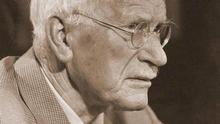Archetypes, Projective Drawing, and Autistic Teenagers
As a school counselor, I work with autistic students seeking vocational training after high school in an initiative that helps integrate these young men and women into work as they develop friendships and social-emotional skills. In this endeavor, I employ Projective Drawings in combination with the Pearson-Marr Archetype Indicator® assessment and archetype system and have presented case studies of my work at professional conferences.
I have used Projective House-Tree-Person (HTP) Drawings with Autistic teenagers for several years. The HTP method has been expanded to allow students to explore the archetypal story being told in the work of art. The method aids in accessing information about a student’s strengths and limits, such as “sensitivity, maturity, flexibility, degree of personality integration, and interaction with the environment.”1 For the last few years, I have integrated the HTP process with archetypal analysis through the PMAI® system to further growth in my students in the five core competencies of social and emotional learning: self-awareness, self-management, social awareness, relationship skills, and responsible decision-making.
I have found that the use of projective drawings is enriched through use of the PMAI assessment, as this instrument can open students to the deeper story they are living as they become aware of personal gifts as well as the shadow side of their personality. This self-knowledge helps them make better decisions about how they choose to live. The combined HTP-PMAI method has endless potential and can be used by individuals, art therapists, educators, counselors, and consultants in any workplace setting.
The method begins by meeting with the student and asking them to draw a house, tree, and person that tell a story. Upon completion of the drawing, there is a guided conversation about the story being told in the student’s drawing. This is considered the “interpretation” or subjective presentation of the image.2 Throughout, the conversation is guided by attention to unusual features of the drawing and significant parts of the story being told.
After the student has taken the PMAI assessment, and their archetype results have been discussed with them, the student is invited to explore the story being told in the drawing through the lens of their archetypal profile, with particular attention given to what Dr. Pearson refers to as the gifts and shadows of the archetypes. This is the “translation” of the work of art.3
In my experience, using projective drawings takes one only part of the way. I have found that the PMAI report opens the person to deeper insights into the gifts and shadows of the story they are living. By combining a narrative approach to the interpretation of the work of art with the PMAI archetypes, students relate readily to the method and enjoy gaining insight into themselves. Since I began using this method, it has been an exciting and creative work for students and myself, as each student’s story is different. The method offers many students hope that their lives can be enriched through self-understanding and responsible decision making.
1 Burns, Robert. (2014/1986). Kinetic House-Tree-Person Drawings: KHTP: An Interpretative Manual. Routledge.
2,3 Kaufmann, Yoram. (2009). The Way of the Image: The Orientational Approach to the Psyche. Zahav Books, Inc.















_thumb.png)


